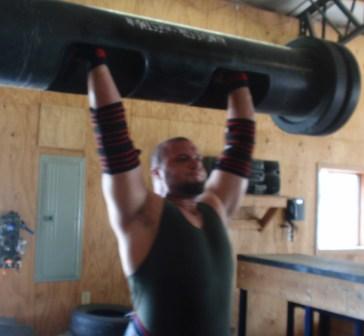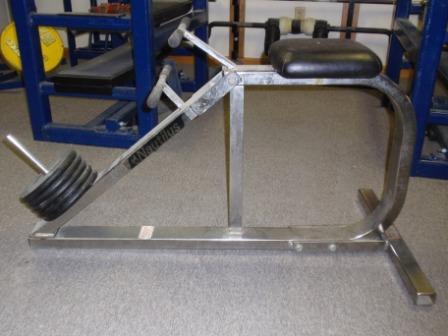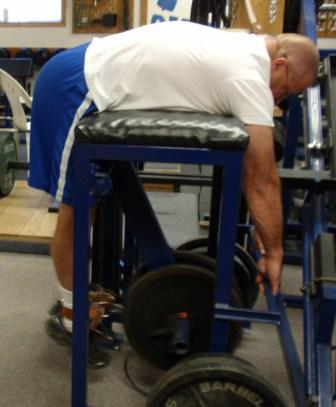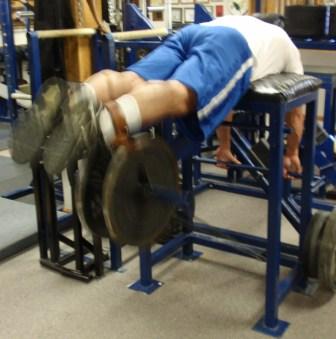The Push Press – From Rack
by Al Myers
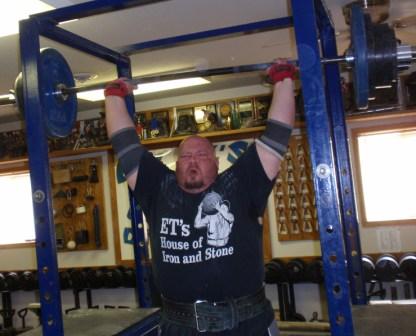
Scott Tully, of the Dino Gym, training the Push Press from Rack with 330 pounds in preparation for the Straight Weight Postal Challenge.
One of the lifts that will be “tested” at the Straight Weight Postal Challenge hosted this month by Thom Van Vleck is the Push Press from a Rack. I want to “highlight” some of the rules for this lift. The USAWA Rule book defines the rules for this lift as:
The rules of the Press – From Rack apply with these exceptions. The heels and toes may rise during the press. However, the feet must not move. The legs may bend during the press to initiate upward movement, but the legs must straighten simultaneously with the completion of the press.
The USAWA rules for the Press from the rack are as follows:
The lifter may take the bar from a rack, stands, or supports. The bar must be positioned on the chest as defined by the rules of the Clean prior to the start of the lift. The lifter must step back from the rack at least 2 steps. Once the bar and lifter are motionless, an official will give a command to press. The press is done according to the rules of the Press as defined in the rules of the Clean and Press. An official will give a command to lower the bar. Upon completion, spotters may assist the lifter in returning the bar to the rack.
As you can see, the rules are pretty straight forward for this lift. One rule that I want to point out is “the legs must straighten simultaneously with the completion of the press”. You can not “catch” the weight overhead with your arms straight and legs bent. That is not allowed. This is a Push Press – not a Push Jerk. Also, unlike a strict press, the heels are allowed to rise when doing a Push Press. This DOES NOT mean the feet can move from their original position! The bar MUST be held overhead until a down command is given by an official.
Thom has proposed this postal meet to find the STRONGEST team, not the best formula adjusted team. There will be NO formulas used (bodyweight adjustments or age adjustments) in determining the best 3 person team. Just the “total weight” lifted!! This is the time, and opportunity, for those supporting this idea to enter a USAWA competition where formulas can not be used as an excuse not to enter all-round weightlifting meets! Results must be sent to Thom by the end of August to participate.
